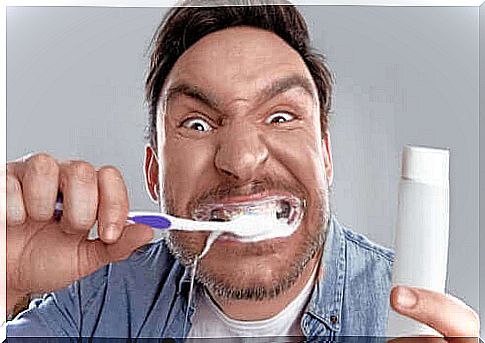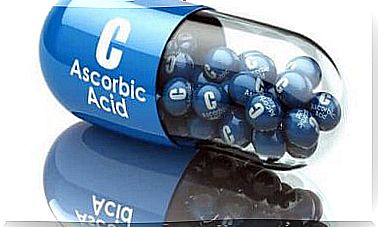“Bleachorexia “: Obsessed With White Teeth

“Bleachorexia” is an obsession to get perfect white teeth.
More and more people want to get a beautiful white smile. Straight, white, perfect teeth are a popular aesthetic phenomenon today. Fashion, media, celebrities and social networks have created an image that glorifies the white smile.
The pursuit of aesthetics is not always a problem; well-performed treatments not only promote beauty but also the health of our teeth. But when the concern for maximum aesthetics is taken to the extreme, the behavior becomes dangerous.
Today’s article discusses the causes of teeth whitening and the risks associated with this obsession.
What is bleachorexia?
As we already mentioned, bleachorexia is obsessed with getting perfect white teeth. People with this obsession feel that their teeth are not white enough and that is why they want to whiten them constantly.
This change is psychological, and the appearance of teeth is subjective. A person’s negative body image has a profound effect on his self-esteem.
However, the damage is not only mental, but also affects the structures of the mouth. People with this problem often try to whiten their teeth. They resort to home methods and excessive bleaching without the supervision of dentists.
Why do people like white teeth?
Some psychological considerations can trigger this obsession in certain individuals. The external factors that contribute to this obsession are:
- Fashion. Celebrities often practice teeth whitening, and people imitate them. They don’t realize that meeting the demands of this fantasy world can cause obsession.
- Advertisements. Products that allow you to easily whiten your teeth are bombarded with advertisements. These are easy to obtain and companies market them for human consumption saying they do not require dental supervision.
- Ignorance of risks. There is misinformation about the dangers of using over-the-counter teeth whitening products.
- White teeth raise self-esteem. People with a bright smile feel more confident than those with crooked and discolored teeth.

Why do teeth stain?
Teeth discolor for various reasons.
The natural discoloration of teeth is the result of the use of some antibiotics, exposure to certain substances, or problems that occurred during tooth formation. They can also tell of trauma or tooth infections, making stains more difficult to remove.
However, most tooth discoloration is due to pigmentations caused by the consumption of food or drink. Colorful foods and beverages can stain teeth such as coffee, tea, wine, blueberries, and tomato sauce. In addition, smoking causes jaundice.
In addition to the causes of discoloration, you need to know that your teeth are not inherently white. The enamel covering the crowns is clear and reveals only the color of the dentin below. The shades of dental tissue are unique and vary between yellow, brown and subtle gray.
In addition, the age of the individual also affects the appearance of the teeth. It is normal for young teeth to be lighter in color. Teeth darken over the years.
Bleachorexia: risk factors for teeth whitening
People with bleachorex are never happy with the appearance of their teeth. In addition, they find them stained as well as too dark and are generally dissatisfied with the results of the bleaching treatment.
As you can imagine, they repeat the bleaching process often. Sometimes they go to the dentist, but most of the time they do teeth whitening at home. Often they use bleach, acidic or abrasive agents without understanding the risks.
Performing these treatments at home, either with natural medicines or purchased from a pharmacy, actually requires a professional evaluation. This is because the use of these substances on damaged teeth can further impair oral health. In addition, the lack of precision in product handling and time management is also risky.
Repeated use of acids and abrasives or the retention of these substances in the teeth for too long destroys the dental tissue. For example, the use of hydrogen peroxide, bicarbonate, lemon, sour fruit, and activated carbon are some common household items that can greatly damage mica.
Teeth and mouth tissues that are overexposed to bleach can suffer from the following symptoms:
- Gingival irritation and gingivitis
- Tooth hypersensitivity
- Enamel demineralization
- Changes in taste
- Pulp necrosis
- Tooth loss
Tips to prevent teeth whitening
Professional treatment is appropriate when the origin of the obsession is psychological. Here are also some risk reduction recommendations:
- Be realistic. Celebrity white teeth are not natural or healthy. Accepting the natural color of your teeth is essential, so dampen your false expectations about false treatment results.
- Assume the reasons for understanding that tooth stains are due to age and consumption of certain products. You can’t dream of a white smile if you’re not ready to quit smoking, minimize the consumption of pigmented drinks, or brush your teeth after consuming these products.
- Beware of ads, products, and remedies that promise good results because they may not be safe.
- Putting certain substances in your mouth is dangerous and harmful. Know that acids and abrasives can damage enamel and gums.
- Respect the time between treatments because the products used for this purpose are aggressive to the oral tissues. Therefore, their repeated use is harmful to sun health. Your dentist can advise you on a suitable waiting period before repeating the treatment.
- Have a qualified dentist perform the bleaching treatments. They only use safe products. They will also assess the general condition of your mouth and diagnose and treat your other possible illnesses and choose the best option for you.

Recommendations for getting healthy teeth
You’ve already read how an overly white smile may not be the same as a healthy mouth. So you should know that an obsession with the appearance of your teeth can be dangerous.
Therefore, in addition to tooth color, it is important to commit to maintaining a healthy oral cavity by maintaining proper oral hygiene.
You can do this by brushing the surfaces of all tooth elements three times a day with a soft bristle and toothpaste. Complete your dental routine with dental floss and mouthwash.
Regular dental visits are also essential. Professionals can diagnose and treat potential problems at an early stage. In addition, they do tooth cleaning and any other applications you may need to control bacterial growth, improve the appearance of your smile, and protect your oral health.
A varied and nutritious diet as well as low consumption of sugary foods help maintain good oral health. Quitting smoking and reducing the consumption of products that stain your teeth will improve the appearance of your smile. In addition, teeth should be brushed after eating and drinking.
Following the advice above will help you maintain a beautiful smile. Choose health instead of aesthetics by accepting the natural color of your teeth. Remember, dental health is paramount!









